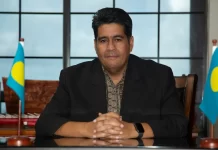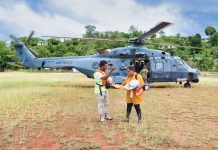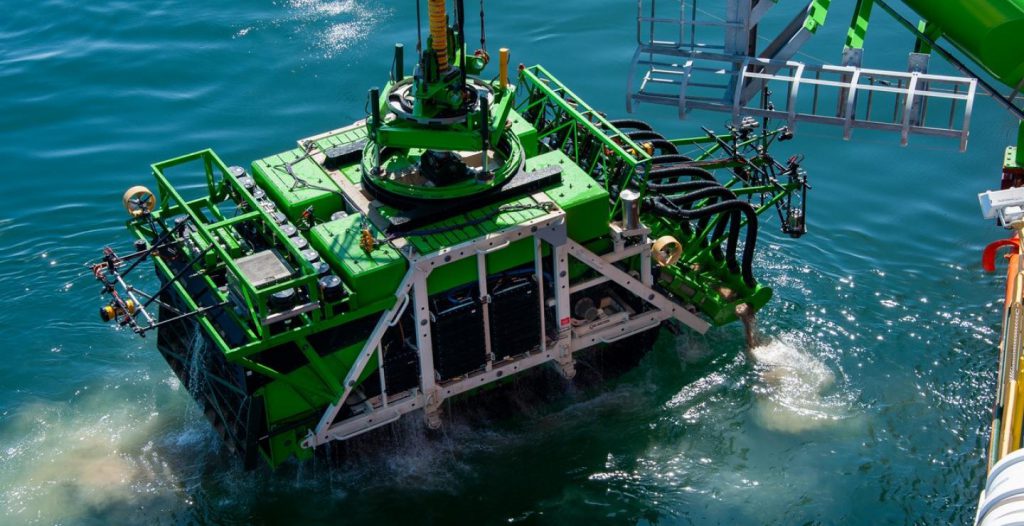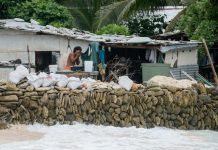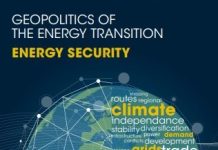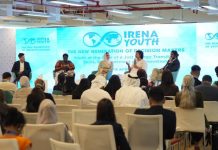By Dr Satyendra Prasad, Senior Fellow – Carnegie Endowment for International Peace
Seabed mining needs to be discussed at the Pacific Islands Forum Meeting in Rarotonga. Because the ocean is such a large part of the Pacific’s economic and social fabric, this cannot be left to the International Seabed Authority (ISA) and the UN alone. The risks are far too high in that approach.
Pacific Island Leaders have been unanimous in their assessment that climate change poses a growing threat to the security and well being of people and communities across the Blue Pacific. The Blue Pacific’s leaders have been unanimous in their view about the worsening impacts of global warming and associated sea level rise on their tuna and coastal fisheries resources, on the health and livelihoods of people across this vast region. The one area in which their views diverge is on the question of deep-sea mining.
The forthcoming Pacific Islands Forum Leaders meeting in Rarotonga presents an opportunity for discussions on deep -sea mining. Communities across the Pacific will be well served if there were a consensus across the region on how to approach and proceed with sea-bed mining.
The Blue Pacific’s policy makers are weighing the economic opportunities that deep-sea mining presents for them. But they do so while also acknowledging that the ocean presents one of the best tools that we have for fighting climate change. They are aware that sea-bed mining presents risks to this.
Ocean-related industries account for up to 5% of the World’s GDP. In the island states of the Pacific, this is as high as 80 percent. Livelihoods of over a third of the Pacific ‘s population are directly or indirectly dependent on the ocean through industries such as tourism; fisheries and marine transportation.
The ocean is too critical in the fight against climate change. It sequesters 25% of annual global carbon and produces 50% of global oxygen. It’s massive mitigating effects do not come without cost. 90% of excess global heat has been stored in the ocean. This has devastating consequences for marine life. A super charged El Nino underway across our region is likely to have far reaching impacts on ocean acidity and coral bleaching.
Deep sea mining involves several methods of extraction. The most common is the removal of underwater rock nodules known as polymetallic nodules. These nodules contain cobalt, nickel, and manganese. These three minerals are extremely important for clean energy technology like electric batteries. Much of expansion in the production of these three minerals is likely to play out in the Pacific through seabed mining – both inside the exclusive economic zones of individual states; and in waters beyond their jurisdiction.
The irony of the green energy transition is that to meet growing demand for clean technology, industry will need lithium, cobalt, and nickel. All methods of their extraction both on land and sea involve some level of environmental degradation. Some argue that The underwater extraction process, using today’s technologies will generate plumes of disturbed sediment. This will disrupt marine ecosystems.
The International Seabed Authority (ISA) has issued 31 permits to 22 exploratory contractors for the deep sea. 17 of these are located in the Clarion-Clipperton Zone in the Pacific. Although no mining licenses have been administered, the Nauru Ocean Resources Inc. (a subsidiary of Canadian Firm The Metals Company) is expected to apply for a contract in 2024. Prior to mining project approval, the ISA must issue comprehensive regulations that safeguard both the political and physical environment from exploitation.
The leaders of the Blue Pacific have their work cut out for them in Rarotonga. The island states will need to go beyond ISA regulations. The ocean is far too important to them for this to be left solely to the ISA.
The whole of the Blue Pacific region will be better if the following three principles are secured:
Firstly, given the role that the ocean plays in our economies, the environmental safeguards and standards will need to be highly credible. The region cannot take a poorly calculated risk with the ocean.
Second, is that smaller states such as Nauru, Cook Islands and Tonga who are likely to proceed to sea bed mining in near future will need to develop, in short periods of time, the capabilities needed to negotiate commercial contracts and provide technical and scientific oversight over operations. Building these capabilities will take time. These may be better done through the Pacific’s regional architecture.
Third, is that the region may need a separate and a credible mechanism through which operations could be halted mid-stream if evidence and data prove that to be necessary. This may be the most controversial of the three but necessary.
The green energy transition will be a large part of the story of development globally. Deep sea mining across the Blue Pacific can be an important part of this next chapter of development. But it can only be achieved if this is done right.
It is indeed possible that deep sea mining in the Blue Pacific will become a new theatre of resource conflict and a manifestation of neo-colonialism as large and rich states descend on identified polymetallic nodule clusters. While materials found in high seas are supposed to be global goods that “benefit humankind,” it is possible that historical inequities perpetuated by colonialism will persist in this new phase of resource extraction. The costs to the region can be high therefore. The political stresses on our fragile institutions can be heavy.
Given such extraordinary risks, some Pacific states have called for a moratorium on sea bed mining. A moratorium at least until 2030 when the United Nations Decade of Oceans Science concludes will make most sense. This will give sufficient time for some of these difficult safeguard questions to be resolved. This will also give some time for the Pacific islands states to grow the capabilities needed to manage the commerce; the deeply entrenched interests as well as the deep environmental risks associated with sea-bed mining.
This option of a moratorium until 2030 is worthy of consideration by Pacific’s leaders in Rarotonga. A consensus on the question of sea-bed mining in the Blue Pacific may be difficult – but consensus is in the Pacific’s DNA.
SOURCE: CEFIP/PACNEWS


